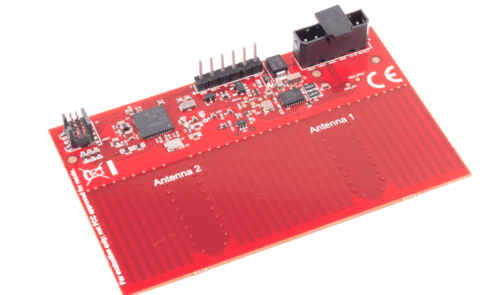The BLE and CAN satellite module streamlines automotive design with high bandwidth, low power consumption, auto-addressing, and precise Bluetooth localization.

Integrating Bluetooth Low Energy (BLE) and Control Area Network Flexible Data Rate (CAN-FD) in a satellite module addresses the evolving needs of modern automotive systems. This advanced module is designed for car access applications, such as Passive Entry Passive Start (PEPS) and Phone as a Key (PaaK) digital vital systems, offering enhanced security, improved connectivity, and superior power efficiency. By leveraging the high bandwidth capabilities of CAN-FD and the low power consumption of BLE, this module provides a robust and reliable communication framework for in-vehicle networks. The TIDA-020032 car Access Bluetooth Low Energy + CAN satellite module reference design by Texas Instruments (TI) streamlines the design process for automotive systems.
The satellite module reference design is crafted for Bluetooth Low Energy PEPS and PaaK digital key car access systems. It showcases how CAN-FD communication can be integrated with our Bluetooth wireless MCUs, meeting the need for higher bandwidth in in-vehicle network communications. Additional benefits include reduced power consumption in sleep mode, an automatic CAN addressing method for enhanced manufacturing efficiency, connection monitoring for improved Bluetooth localization accuracy, and a compact PCB capable of measuring Bluetooth Angle of Arrival (AoA) and Received Signal Strength Indicator (RSSI).
The car access systems require higher in-vehicle data communication speeds, utilizing CAN or CAN-FD communications between satellite modules and the central car access module located in the body control module (BCM) or a separate electronic control unit (ECU). The increased network bandwidth allows for the direct transmission of raw measurement data, such as angle of arrival (AoA) IQ data, to the central car access module for processing. A unique feature of the design is its auto-addressing capability. Auto-addressing enables all satellite modules to be flashed with the same firmware, simplifying manufacturing by eliminating the need to assign different CAN IDs to each module.
During initial power-on in manufacturing, each satellite module receives a unique CAN address corresponding to its location in or around the vehicle, allowing the central car access module to identify the source of localization measurement data based on the CAN ID. The compact solution provides the flexibility for car access system designers to evaluate and implement the best Bluetooth localization methods, enabling the addition of their combination of techniques to their system.
Some of the key features of the reference design include:
- CAN, CAN-FD communications
- CAN auto-addressing
- 25-μA system sleep state (typical)
- Capable of measuring Bluetooth AoA and RSSI
- Small 47.625-mm × 76.2-mm (1.875 in × 3 in) PCB
- Improved system performance with Bluetooth connection monitoring capabilities
TI has tested this reference design. It comes with a bill of materials (BOM), schematics, assembly drawing, printed circuit board (PCB) layout, etc. You can find additional data about the reference design on the company’s website. To read more about this reference design, click here.






